EDINBURGH TO SVALBARD
The voyage north to the Arctic began in Edinburgh and our visit coincided with the arrival of the Olympic flame at the castle. Flying from Marseille with Ryanair and the limited luggage allowance that entails, Vincent wore all of his warm clothing on the flight including a straw hat from the Aix Art in the Gardens festival!
It seemed strange to see the MS Expedition, last seen in Uushuaia in December following our Antarctic trip, moored in the port of Leith. Susan Adie was once again the team leader and many of the staff remembered us so we felt immediately at home.
After passing through the lock, the ship took a detour to pass close to the reserve of Bass Rock where thousands of gannets could be seen nesting on the rock and flying out to sea.
ORKNEY
It seemed strange to see the MS Expedition, last seen in Uushuaia in December following our Antarctic trip, moored in the port of Leith. Susan Adie was once again the team leader and many of the staff remembered us so we felt immediately at home.
After passing through the lock, the ship took a detour to pass close to the reserve of Bass Rock where thousands of gannets could be seen nesting on the rock and flying out to sea.
Kirkwall, the capital of the Orkney Islands is situated on what is known as the Mainland, the biggest of a group of over 70 islands. By the time the Vikings arrived, the islands had already been settled for over 5000 years by people who constructed elaborate tombs and erected religious monuments. By 500BC the farmers and fishermen of the Iron Age had begun to build strong circular houses and by 100BC the defensive stone towers known as broches had appeared.
By 800AD Orkney was firmly established as a Viking colony and in 995AD Christianity came to the islands after Olaf Tryggvason, King of Norway, told Earl Sigurd the Stout of Orkney “I want you and all your subjects to be baptised. If you refuse, I’ll have you killed on the spot, and I swear I will ravage every island with fire and steel”. The last Norse Earl was murdered around 1231 and within a few years the rulers were Scots paying homage to the King of Norway.
By 800AD Orkney was firmly established as a Viking colony and in 995AD Christianity came to the islands after Olaf Tryggvason, King of Norway, told Earl Sigurd the Stout of Orkney “I want you and all your subjects to be baptised. If you refuse, I’ll have you killed on the spot, and I swear I will ravage every island with fire and steel”. The last Norse Earl was murdered around 1231 and within a few years the rulers were Scots paying homage to the King of Norway.
Skara Brae, Europe’s best preserved Neolithic village dating from 3100BC, was discovered in 1850 after a violent storm swept away the sand dunes covering it. Excavations revealed a warren of covered passages connecting stone built houses and workshops which have survived in remarkably good condition. Stone furniture includes dressers and bedsteads and some buildings even have primitive drains to carry away waste.
Close by stands Skaill House, a 17th century manor house, complete with period furniture,which was home to William Watt the Breckness laird who discovered Skara Brae when out walking with his dog
Close by stands Skaill House, a 17th century manor house, complete with period furniture,which was home to William Watt the Breckness laird who discovered Skara Brae when out walking with his dog
The spectacular Ring of Brodgar once consisted of 60 standing stones and about 36 stones still stand, some up to 4.5m high. The circle has a diameter of 104m and is surrounded by a deep trench. The massive monolith of the Watch Stone stands close by and there are numerous early Bronze Age burial mounds.
George Mackay Brown
The imposing Cathedral of St Magnus was founded in 1137 by the Norse Earl Rognvald Kolsson in memory of his uncle the martyred Magnus. It was built by the master masons of Durham and took 300 years to complete. The ruins of the Bishop’s Palace and the Earl’s Palace stand across the road.
George Mackay Brown
The imposing Cathedral of St Magnus was founded in 1137 by the Norse Earl Rognvald Kolsson in memory of his uncle the martyred Magnus. It was built by the master masons of Durham and took 300 years to complete. The ruins of the Bishop’s Palace and the Earl’s Palace stand across the road.
SHETLANDS
Many species of sea birds breed on the Shetlands and the RSPB reserve at Sumburgh Head is a good place to see some of them. Guillemots nest in huge colonies on the top of stacks and high rock ledges and there are around 14000 at Sumburgh Head. They lay one egg and at three weeks the chicks, still flightless, launch themselves into the sea. The male parent looks after the chick until it can feed itself and together they swim towards Norway, a trip of around 356km.
2000 breeding pairs of Puffins nest in burrows on grassy banks and cliff tops. They “fly” underwater in pursuit of sand eels and other small fish and remain on land during the breeding season from April to mid August spending the winter far out at sea.
There are 200 Razorbills at Sumburgh Head and they lay one egg. These birds are in a steady decline due to food shortages. The oldest bird known is 42 years.
Kittiwakes make a nest of mud, vegetation etc and plaster these nests to the cliff face. There are 350 nesting pairs which only return to land to breed.
JARLSHOF
2000 breeding pairs of Puffins nest in burrows on grassy banks and cliff tops. They “fly” underwater in pursuit of sand eels and other small fish and remain on land during the breeding season from April to mid August spending the winter far out at sea.
There are 200 Razorbills at Sumburgh Head and they lay one egg. These birds are in a steady decline due to food shortages. The oldest bird known is 42 years.
Kittiwakes make a nest of mud, vegetation etc and plaster these nests to the cliff face. There are 350 nesting pairs which only return to land to breed.
JARLSHOF
Jarlshof, named by Sir Walter Scott and meaning Earl’s House, is said to be one of the most remarkable sites ever excavated in the British Isles. It lay hidden beneath the sand until a storm in the 1880’s revealed massive stone walls on the beach at the West Voe of Sumburgh.
It is unusual in that there is a succession of archaeological levels dating from the late Bronze Age some 2800 years ago through the Iron Age 2000 years ago and the Norse occupation early in the 9th century to the medieval layer and levels up to the 17th century.
It is possible to walk inside a 1,600 year old house still complete to its full height. The people who lived at Jarshof bred sheep, including the Soay sheep, and fished and hunted for seals and walrus.
It is unusual in that there is a succession of archaeological levels dating from the late Bronze Age some 2800 years ago through the Iron Age 2000 years ago and the Norse occupation early in the 9th century to the medieval layer and levels up to the 17th century.
It is possible to walk inside a 1,600 year old house still complete to its full height. The people who lived at Jarshof bred sheep, including the Soay sheep, and fished and hunted for seals and walrus.
The overnight voyage to Norway was calm and the ship entered Nordfjord, some 110km in length, at dawn. At this time of year, darkness does not fall until nearly midnight and the sun rises shortly after 3am to a view of mountains, fiords and villages through the large cabin window. Norway stretches an incredible 1752km from south to north and is 430km at its widest point. There are more than 75,000 offshore islands providing sheltered harbours and passage for the many ships that ply the coast.
The area around Stryn has long been popular with outdoor enthusiasts and the nearby Jostedalsbreen glacier at 100km long and 15km wide is the largest in continental Europe. The ice cap sends fingers into the valleys below and we walked up to the Briksdal glacier which has been receding since the 18th century.
Beautifully coloured rocks and boulders line the beach of the blue glacial lake and many species of wildflowers can be seen.
GEIRANGERFIORDEN
The following day the MS Expedition made its way slowly up the magnificent Geirangerfjorden which is one of the two branches of Storfjorden and stretches for 16km. It is the quintessential Norwegian fjord passing below precipitous mountains with farms perched on the slopes and cascading waterfalls. A number of the farms have no access other than a rope from the base of the cliffs although such buildings are no longer permanently inhabited.
A winding road known as the Golden Route led up from the village of Olden into the snow covered mountains from where, at 5000 ft, magnificent views of the Dalsnibba mountain, popular with skiers and Geirangerfjorden and its village could be enjoyed.
The area around Stryn has long been popular with outdoor enthusiasts and the nearby Jostedalsbreen glacier at 100km long and 15km wide is the largest in continental Europe. The ice cap sends fingers into the valleys below and we walked up to the Briksdal glacier which has been receding since the 18th century.
Beautifully coloured rocks and boulders line the beach of the blue glacial lake and many species of wildflowers can be seen.
GEIRANGERFIORDEN
The following day the MS Expedition made its way slowly up the magnificent Geirangerfjorden which is one of the two branches of Storfjorden and stretches for 16km. It is the quintessential Norwegian fjord passing below precipitous mountains with farms perched on the slopes and cascading waterfalls. A number of the farms have no access other than a rope from the base of the cliffs although such buildings are no longer permanently inhabited.
A winding road known as the Golden Route led up from the village of Olden into the snow covered mountains from where, at 5000 ft, magnificent views of the Dalsnibba mountain, popular with skiers and Geirangerfjorden and its village could be enjoyed.
Munkholmen (Monk’s Island) lies just off the coastal city of Trondheim in Trondheimsfjord. First occupied around 995 according to the sagas, it served as a place of execution and the heads of Jarl Hakon and his murderer, the slave Kark were placed on stakes here by Olav Trygvassen. The monastery of Nidarholm Abbey was founded Benedictine monks in 1100 and it became wealthy from the produce of more than 200 farms owned in the area. The abbey was destroyed by fire in 1531 and in the mid 1600’s the island became a fortress. After 1680 it became a prison and the most famous prisoner was the former Grand Chancellor and Earl of Griffenfeld, Peder Schumacher.
The island became a fortress during the 19th century and was occupied by the Germans during WWII
The island became a fortress during the 19th century and was occupied by the Germans during WWII
Austratt Manor is one of the oldest buildings of its type in Norway and dating from the Viking era lies in the flat and fertile region of Orlandet. It was owned by the powerful Romer family and Inger Ottesdatter Romer, who died in 1555 is the main protagonist in Ibsen’s play Lady Inger of Osterat. The castle was rebuilt in Renaissance style between 1654 – 56 by Ove Bjelke.
The inner courtyard is embellished with painted Biblical figures and spacious rooms complete with period furniture look over rural countryside and low mountains.
The area behind the chapel contains the massive carved wooden coffins of Ove Bjelke and his three wives.
The inner courtyard is embellished with painted Biblical figures and spacious rooms complete with period furniture look over rural countryside and low mountains.
The area behind the chapel contains the massive carved wooden coffins of Ove Bjelke and his three wives.
The nearby Austratt fort displays a huge triple gun emplacement which was transferred from the battleship Gneisenau by the Germans. It is possible to enter the extensive mainly underground complex and climb up through the six floors of complex machinery and ammunition to the turret which was able to swivel in order to aim the guns which could reach over 40km.
The mountain of Torghatten (258m) lies on the island of Torget. A huge cave like hole was formed in the granite rock during the Scandinavian ice age and steep steps lead up to the entrance.
Sea eagles could be seen soaring high above the cliffs and there were wonderful views out over the many small islands. The climb down the other side over scree was steep and led through meadows filled with wild flowers.
Sea eagles could be seen soaring high above the cliffs and there were wonderful views out over the many small islands. The climb down the other side over scree was steep and led through meadows filled with wild flowers.
Alstahaug on the island of Alsta has a medieval church where the famous Norwegian poet/priest Petter Dass lived and worked from 1700. A modern museum, dedicated to his life and poetry, stands close by constructed in a cleft between the rocks and with a lovely view over the small harbour.
A monument marks the crossing of the Arctic Circle
To celebrate the fact that we were crossing the Arctic Circle at 66” 33” 44” degrees north on Midsummer’s Day, everyone gathered on deck for a toast with the traditional Norwegian drink, aquavit. The Arctic circle is one of the 5 major circles of latitude that mark maps of the Earth and the area to the north of this circle is know as the Arctic. The summer solstice is an important celebration in Scandinavia, second only to Christmas, and huge bonfires are lit. Heading north, the sun no longer sets and there is daylight for 24 hours
SENNA ISLAND
Senna island is the site of the earliest fishing community found in Norway. 9000 years ago, people camped in the caves and overhanging rocks where many artifacts have been found. The remain of 33 victims of the Black Death have been discovered in Kirkhelleren, the most impressive of the caves, often described as a cathedral formed by nature.
During a walk around the back of the mountain we were lucky to see two sea eagles bringing food to their chick perched outside the nest high on a crag.
During a walk around the back of the mountain we were lucky to see two sea eagles bringing food to their chick perched outside the nest high on a crag.
The Svartisen ice cap covers 201 square km and its glacier is the 2nd biggest in Norway and also the closest to sea level in Europe. A challenging climb up the steep rock face to the Engen arm of the glacier revealed ice walls up to 450 metres high. Patches of rocky soil held a variety of alpine plants and mosses and there were wonderful views towards the fjord. Redstarts and fieldfares were among the birds seen on the walk back through the woodland at the foot of the glacier.
Vincent and Guy
LOFOTEN ISLANDS
The Lofoten islands have long been on our list of places to visit and we landed by zodiac at the traditional fishing village of A on the southern end of the islands on a beautiful, sunny morning. The archipelago is well above the Arctic Circle and located between the 68th and 69th parallel. The climate is milder than might be expected due to the influence of the gulf stream current.
The village specializes in stockfish which is dried cod and this is widely exported. The Torrfiskmuseum tells the story of the cod fishing industry through a series of displays and there was an entertaining talk on the history of the village.
Each of the traditional red painted cottages had a rack of drying split fish.
A tour of several of the islands by bus had been arranged and we visited the beautifully situated village of Reine, recently voted one of the most picturesque villages in Norway.
The small fishing village of Sund with it's blacksmith's shop and iron sculpture
Several impressive pieces of sculpture have been placed in a quiet valley, in this one the viewers are reflected against the scenic backdrop
Late one evening, the ship entered the short, narrow and highly scenic Trollfjord, a sidearm of Raftsundet. The Trollfindene mountain at its head rises 1000 metres from sea level.
Tromso is the gateway to the Arctic and is situated on an island and linked to the mainland by a 1036 meter long curved concrete bridge.
A cable car to the summit of Mt Storsteinen allows panoramic views over the city and surrounding mountains and waterways.
The Arctic cathedral, built in 1965, was designed by the architect Jan Inge Hovig, who listedt the shape of icebergs and Sami tents among his influences.
The Polar Museum, located in a traditional wooden house built on the wharf in 1837, described the long history of hunting and trapping in the Norwegian Arctic. The explorer Roald Amundsen began many of his expeditions in Tromso and the museum featured an exhibition relating to his life.
A cable car to the summit of Mt Storsteinen allows panoramic views over the city and surrounding mountains and waterways.
The Arctic cathedral, built in 1965, was designed by the architect Jan Inge Hovig, who listedt the shape of icebergs and Sami tents among his influences.
The Polar Museum, located in a traditional wooden house built on the wharf in 1837, described the long history of hunting and trapping in the Norwegian Arctic. The explorer Roald Amundsen began many of his expeditions in Tromso and the museum featured an exhibition relating to his life.
SVALBARD
The long crossing to Spitsbergen, the largest island in the Svalbard archipelago, was remarkably smooth and during the voyage a number of whales (humpback, minke and fin) were seen as well as pods of white beaked dolphins, several of which surfed in the bow waves.
Fulmars and kittiwakes followed the ship and a little auk hitched a ride for several hours. In the late afternoon we reached Bjornoya (Bear Island) the southernmost part of the archipelago which was discovered and named by William Barentz during one of his attempts to discover the NW passage in 1596. Thousands of breeding Brunnich’s guillemots could be seen around the sheer cliffs rising to 536 metres from a sea exceptionally rich in fish.
Fulmars and kittiwakes followed the ship and a little auk hitched a ride for several hours. In the late afternoon we reached Bjornoya (Bear Island) the southernmost part of the archipelago which was discovered and named by William Barentz during one of his attempts to discover the NW passage in 1596. Thousands of breeding Brunnich’s guillemots could be seen around the sheer cliffs rising to 536 metres from a sea exceptionally rich in fish.
The Philippino crew had been very successful with their fishing, landing a hundred kilos of cod in one day. A barbeque lunch was arranged on deck where several of these fine fish were baked and served.
Hornsund is a 30 km long fjord on the south of the island of Spitsbergen. We landed by zodiac at Gnalodden near the 759 meter bird cliff of Gnalberget where there was an excellent view of thousands of nesting Brunnich’s guillimots and kittiwakes.
Staff members trained in the use of firearms and carrying rifles kept a constant watch for polar bears which are able to approach very quietly and move quickly in pursuit of prey. Barnacle geese, snow buntings and arctic skuas were also present in the area.
Carpets of purple saxifrage covered the ground between the rocks and other species of tiny plants were coming into flower with the melting of the snow. In the afternoon we set off by zodiac to search for polar bears and were lucky enough to find two separate animals. Polar bears live mainly on the ice and hunt seals. By 1970 their numbers had dropped to between 300 – 400 due to overhunting but once this was banned, numbers increased to over 2000. Hunting is still allowed in Canada where the native Inuit have a quota and in his lecture of polar bears, Tom mentioned that the right to shoot a polar bear had recently been sold for $35000 to a Norwegian trophy hunter.
Staff members trained in the use of firearms and carrying rifles kept a constant watch for polar bears which are able to approach very quietly and move quickly in pursuit of prey. Barnacle geese, snow buntings and arctic skuas were also present in the area.
Carpets of purple saxifrage covered the ground between the rocks and other species of tiny plants were coming into flower with the melting of the snow. In the afternoon we set off by zodiac to search for polar bears and were lucky enough to find two separate animals. Polar bears live mainly on the ice and hunt seals. By 1970 their numbers had dropped to between 300 – 400 due to overhunting but once this was banned, numbers increased to over 2000. Hunting is still allowed in Canada where the native Inuit have a quota and in his lecture of polar bears, Tom mentioned that the right to shoot a polar bear had recently been sold for $35000 to a Norwegian trophy hunter.
In the evening the ship entered Brepollen, one of the most impressive glacial bays in Svalbard, and approached the Hornbreen glacier. Several decades ago the Starbreen, Hornbreen and Chomjakoubreen (breen is the the Norwegian word for glacier) formed one single front which is now split into three but still very impressive
Varsolbukta in Bellsund is a steep cliff which is home to thousands of little auks which could be seen nesting on the scree and flying in large and noisy flocks. Reindeer could be spotted in the distance feeding on the lush tundra moss which is fertilised by the bird droppings.
At Ahistrandodden we walked for a couple of miles along the stony beach and across the tundra to visit old huts which had belonged to trappers, one of which was surrounded by piles of bones from white beluga whales which were slaughtered in great numbers from a station established here in 1930.
The remains of traps used to catch foxes in winter during their white phase when the skins were more valuable could be seen. Hunting is no longer legal in Svalbard and numbers are slowly recovering. In the evening the ship approached the Nathorstbreen glacier in Van Keulenfjord which, much to the surprise of the Captain, had moved dramatically forward to a point 7 miles further than the charts indicated.
The remains of traps used to catch foxes in winter during their white phase when the skins were more valuable could be seen. Hunting is no longer legal in Svalbard and numbers are slowly recovering. In the evening the ship approached the Nathorstbreen glacier in Van Keulenfjord which, much to the surprise of the Captain, had moved dramatically forward to a point 7 miles further than the charts indicated.
Expedition style cruises tend to be very flexible – wherever wildlife or other places of interest are to be seen the plan may well change to accommodate this as it did on our last morning. News was received that a group of around 30 walrus had hauled out on Poolepynten, a point on the Prins Karls Island, and many more were swimming offshore. Once we reached the area, the zodiacs were launched for a wet landing (climbing out into shallow water as opposed to dry land) and we set off, walking very quietly in order to approach the animals without alarming them.
Nesting terns dive bombed anyone who strayed from the clearly marked path and phalaropes and purple sandpipers could be seen wading in the small pools. The group of sleeping walrus seemed quite unconcerned by our presence and the staff made sure that no one overstepped the strict boundaries.
Later a last zodiac cruise was offered along the face of the glacier where bearded seals slept on small patches of floating ice.
Nesting terns dive bombed anyone who strayed from the clearly marked path and phalaropes and purple sandpipers could be seen wading in the small pools. The group of sleeping walrus seemed quite unconcerned by our presence and the staff made sure that no one overstepped the strict boundaries.
Later a last zodiac cruise was offered along the face of the glacier where bearded seals slept on small patches of floating ice.
The last briefing onboard is always an occasion for a few speeches, awards and humour. Team members Tom, Frank and compete for best Viking beard
Members of the Philippino crew
A special award for Lilo, at 96 the oldest passenger, who travelled alone from Israel to fulfil her dream of seeing the Arctic. She rarely missed a zodiac outing and could often be seen perched on the Captain's chair up on the bridge
During dinner, the town of Longyearbyn came into view with a number of obsolete coal mines stark against the scree covered mountains. People are advised not to venture beyond the last house as deaths have occurred from attacks by polar bears which have occasionally been seen in the town. Local people carry rifles when travelling beyond the town limits.
REINDEER IN LONGBEARYEN
NESTING EIDER DUCKS
ARCTIC SKUA
A huge cruise ship docked briefly at the tiny town of Longbearyen and one of the tours on offer was a trip by dog sledge
Our overnight accommodation was in Nybyen in a prefabricated hut, one of eight erected for the miners after WWII. In 1987 the miners moved out and it became the Spitsbergen guest house.
Directly behind on the hillside lie the remains of the No. 2 mine which was shelled by the battleship Scharnhorst during the attack on Svarlbard in 1943. The mine burned until 1962.
NESTING EIDER DUCKS
BARNACLE GEESE
ARCTIC SKUA
A huge cruise ship docked briefly at the tiny town of Longbearyen and one of the tours on offer was a trip by dog sledge
Our overnight accommodation was in Nybyen in a prefabricated hut, one of eight erected for the miners after WWII. In 1987 the miners moved out and it became the Spitsbergen guest house.
Directly behind on the hillside lie the remains of the No. 2 mine which was shelled by the battleship Scharnhorst during the attack on Svarlbard in 1943. The mine burned until 1962.
The 3 hour flight back to Oslo left at 5am and when we left the hostel at 3.30am the sun was shining brightly and the Expedition had disappeared to the north with another group of travellers, in search of the wonders of the Arctic.


























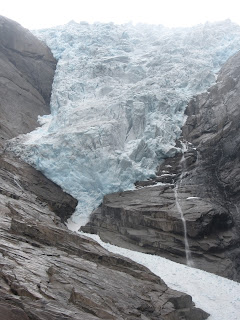















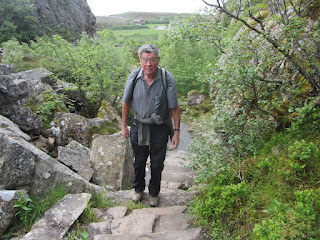

















































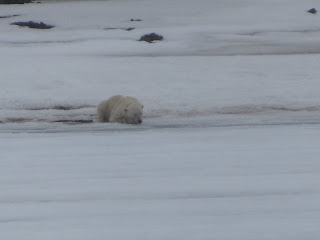




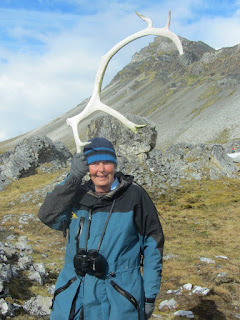








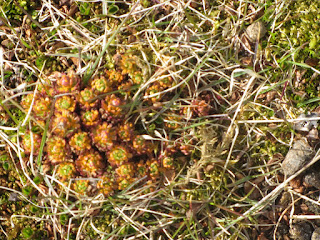




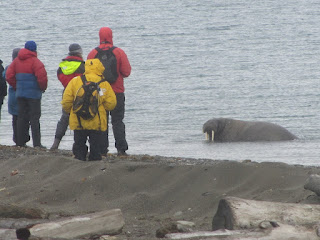

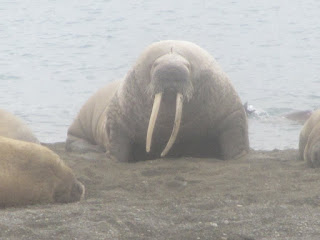


















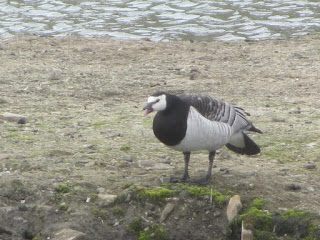







No comments:
Post a Comment